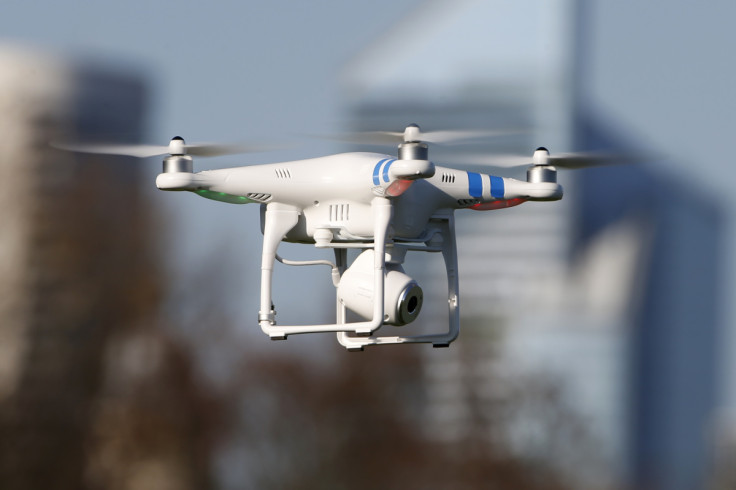Evolving drone technology is revolutionising the transportation and logistics industry
Advancing drone technology is revolutionising the transportation and logistics market as data shows that the industry is projected to grow from USD 534 million in 2022 to USD 17,881 million by 2030.

The US is globally the largest user of the drone logistics and transportation market and according to a report by MarketsandMarkets, the drone logistics and transportation industry is projected to grow from $534 million in 2022 to $17,881 million by 2030.
The concept of having something delivered via a drone seems like a science fiction imagination, but since the COVID-19 pandemic, its practicality became a functional reality. The ability of drones to deliver various types of products such as medical supplies, food, parcels, and groceries at a time when everything became inaccessible, was convenient and helpful.
Some of the top drone delivery companies are Amazon Prime Air, which Amazon CEO Jeff Bezos disclosed proposals for in an interview on US TV show 60 Minutes in 2013. Flytrex is an Israeli startup that partnered with an Icelandic eCommerce website in 2015 to develop a faster delivery time from 30 minutes to under 5 minutes.
Wing is an on-demand drone delivery service, which is a subsidiary of Google parent Alphabet. Other notable companies include UPS Flight Forward, Wingcopter, DHL Parcelcopter and FedEx.
In Britain, Ireland's drone delivery company Manna which launched in 2018, delivering food and medicines during COVID-19, is one of Europe's largest and most advanced drone services that make deliveries in less than 3 minutes to consumers' homes. Manna recently announced its partnership and investment with Coca-Cola HBC and its entry into the US market with its first trial in the Dallas-Fort Worth area to compete with Amazon and Wing.
Bobby Healy, CEO and Founder of Manna commented: "We are delighted to partner with two major brands, Coca-Cola HBC and Hillwood on our journey to bring a new form of delivery to suburban homes and as we start to scale globally."
He also added that to work with Hillwood who "develop technology-forward, innovative lifestyle communities" and with Coca-Cola HBC who "are committed to more sustainable and advanced delivery solutions is testament to the realisation that last mile delivery can be done in a more efficient, safer and greener way".
Furthermore, Christopher Ash, Senior Vice President of aviation business development for Hillwood said: "We're excited to work with Manna as a key operator at the AllianceTexas Mobility Innovation Zone, where they can scale and commercialize drone delivery in one of the world's most unique environments".
He further expressed that: "At Hillwood, we are a team collaborating to bring innovative supply chain technologies to North Texas and provide next-level amenities to the communities we reach."
Manna aims to reform ground transportation in suburban areas to make deliveries directly to customers, using custom-developed aerospace-grade drones.
However, as much as drone technology evolves there are still disadvantages to drone delivery.
- They are an expensive investment for companies.
- There is a risk to personal privacy, as drone-mounted cameras on its delivery route may capture images and stream video of persons without consent.
- Unpredictable risks of malfunction in the aircraft, just like a delivery van could be susceptible to a breakdown.
- Drones involve low-altitude flight, which leaves them susceptible to theft and easy targets for being hacked and commandeered.
- As small aircraft, drones can be vulnerable to bad weather, especially high winds.
- Battery life can be a defect as it may drain quickly during delivery.
But the advantages may still counter the drawbacks of drones as advancements in technology continue.
- Drones are environmentally friendlier for the planet due to being battery-operated and the reduction of the amount of fossil fuels being used.
- Delivery to remote areas can be especially beneficial for delivering life-saving medical supplies and equipment.
- Drone delivery is autonomous and is more cost-effective for businesses, therefore saving on the labour costs incurred with manual delivery.
- Drones can distribute without being limited to location and reach all their consumers, especially in suburban areas.
- Drones are highly efficient with the use of GPS technology and deliver to customers safely and directly, faster than ground-based transport.
The future for drone technology may develop with alternatives to being battery-operated with hybrid electric-gasoline engines and hydrogen engines, especially if transporting heavier loads. Larger models to make larger deliveries and AI could also revolutionise the sector.
© Copyright IBTimes 2025. All rights reserved.





















